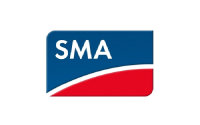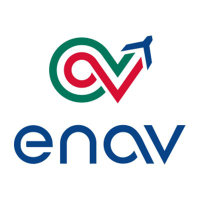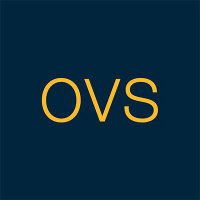
J B Chemicals and Pharmaceuticals Ltd
NSE:JBCHEPHARM


| US |

|
Johnson & Johnson
NYSE:JNJ
|
Pharmaceuticals
|
| US |

|
Berkshire Hathaway Inc
NYSE:BRK.A
|
Financial Services
|
| US |

|
Bank of America Corp
NYSE:BAC
|
Banking
|
| US |

|
Mastercard Inc
NYSE:MA
|
Technology
|
| US |

|
UnitedHealth Group Inc
NYSE:UNH
|
Health Care
|
| US |

|
Exxon Mobil Corp
NYSE:XOM
|
Energy
|
| US |

|
Pfizer Inc
NYSE:PFE
|
Pharmaceuticals
|
| US |

|
Palantir Technologies Inc
NYSE:PLTR
|
Technology
|
| US |

|
Nike Inc
NYSE:NKE
|
Textiles, Apparel & Luxury Goods
|
| US |

|
Visa Inc
NYSE:V
|
Technology
|
| CN |

|
Alibaba Group Holding Ltd
NYSE:BABA
|
Retail
|
| US |

|
JPMorgan Chase & Co
NYSE:JPM
|
Banking
|
| US |

|
Coca-Cola Co
NYSE:KO
|
Beverages
|
| US |

|
Walmart Inc
NYSE:WMT
|
Retail
|
| US |

|
Verizon Communications Inc
NYSE:VZ
|
Telecommunication
|
| US |

|
Chevron Corp
NYSE:CVX
|
Energy
|
Utilize notes to systematically review your investment decisions. By reflecting on past outcomes, you can discern effective strategies and identify those that underperformed. This continuous feedback loop enables you to adapt and refine your approach, optimizing for future success.
Each note serves as a learning point, offering insights into your decision-making processes. Over time, you'll accumulate a personalized database of knowledge, enhancing your ability to make informed decisions quickly and effectively.
With a comprehensive record of your investment history at your fingertips, you can compare current opportunities against past experiences. This not only bolsters your confidence but also ensures that each decision is grounded in a well-documented rationale.
Do you really want to delete this note?
This action cannot be undone.

| 52 Week Range |
1 509.8
1 916.5
|
| Price Target |
|
We'll email you a reminder when the closing price reaches INR.
Choose the stock you wish to monitor with a price alert.

|
Johnson & Johnson
NYSE:JNJ
|
US |

|
Berkshire Hathaway Inc
NYSE:BRK.A
|
US |

|
Bank of America Corp
NYSE:BAC
|
US |

|
Mastercard Inc
NYSE:MA
|
US |

|
UnitedHealth Group Inc
NYSE:UNH
|
US |

|
Exxon Mobil Corp
NYSE:XOM
|
US |

|
Pfizer Inc
NYSE:PFE
|
US |

|
Palantir Technologies Inc
NYSE:PLTR
|
US |

|
Nike Inc
NYSE:NKE
|
US |

|
Visa Inc
NYSE:V
|
US |

|
Alibaba Group Holding Ltd
NYSE:BABA
|
CN |

|
JPMorgan Chase & Co
NYSE:JPM
|
US |

|
Coca-Cola Co
NYSE:KO
|
US |

|
Walmart Inc
NYSE:WMT
|
US |

|
Verizon Communications Inc
NYSE:VZ
|
US |

|
Chevron Corp
NYSE:CVX
|
US |
This alert will be permanently deleted.
J B Chemicals and Pharmaceuticals Ltd
In the bustling marketplace of India's pharmaceutical industry, J B Chemicals and Pharmaceuticals Ltd. has carved its niche, a testament to its strategic vision and operational prowess. Founded in 1976 by Janak Mehta, the company has grown from its humble beginnings into a leading player in both the domestic and international arenas. Originally rooted in the ethos of quality and innovation, it established a firm foothold in the pharmaceutical sector through a diverse portfolio that includes formulations, active pharmaceutical ingredients (APIs), and contract manufacturing. As a vertically integrated company, J B Chemicals leverages its ability to control the manufacturing process from start to finish, ensuring strict quality measures and cost efficiencies, vital in tackling industry competition and regulatory challenges.
The heart of J B Chemicals’ revenue model is its well-rounded product line that spans a range of therapeutic categories, including gastrointestinal, cardiovascular, and anticold segments. Blockbuster brands like Cilacar and Metrogyl have propelled the company to the top ranks within India, while its export division flourishes, contributing significantly to total earnings. With footprints in more than 30 countries, particularly in Russia and South Africa, the company taps into the growing demand for generic medicines worldwide. Moreover, by embracing innovation and investing in research and development, J B Chemicals continues to introduce new and improved medical solutions, positioning itself as a dynamic player in meeting global healthcare needs.

In the bustling marketplace of India's pharmaceutical industry, J B Chemicals and Pharmaceuticals Ltd. has carved its niche, a testament to its strategic vision and operational prowess. Founded in 1976 by Janak Mehta, the company has grown from its humble beginnings into a leading player in both the domestic and international arenas. Originally rooted in the ethos of quality and innovation, it established a firm foothold in the pharmaceutical sector through a diverse portfolio that includes formulations, active pharmaceutical ingredients (APIs), and contract manufacturing. As a vertically integrated company, J B Chemicals leverages its ability to control the manufacturing process from start to finish, ensuring strict quality measures and cost efficiencies, vital in tackling industry competition and regulatory challenges.
The heart of J B Chemicals’ revenue model is its well-rounded product line that spans a range of therapeutic categories, including gastrointestinal, cardiovascular, and anticold segments. Blockbuster brands like Cilacar and Metrogyl have propelled the company to the top ranks within India, while its export division flourishes, contributing significantly to total earnings. With footprints in more than 30 countries, particularly in Russia and South Africa, the company taps into the growing demand for generic medicines worldwide. Moreover, by embracing innovation and investing in research and development, J B Chemicals continues to introduce new and improved medical solutions, positioning itself as a dynamic player in meeting global healthcare needs.
Revenue Growth: JB Pharma reported Q2 FY '26 revenue of INR 1,085 crores, up 8% year-on-year, with domestic business growing 9% and international business up 7%.
Profitability: Net profit rose 19% year-on-year to INR 208 crores, with EBITDA up 12% to INR 319 crores, and EBITDA margin up 100 bps to 29.4%.
Margin Expansion: Gross margin improved by 200 bps to 68.2% due to cost optimization, better product mix, and price growth.
Domestic Outperformance: The domestic business outpaced the Indian pharma market, especially in chronic segments which grew over 20%.
International Segment: CDMO grew 20% while Russia was strong; South Africa and US were muted but are expected to recover in H2.
Guidance Affirmed: Management reiterated 12%-14% growth guidance for domestic and CDMO businesses, and kept margin guidance unchanged.
Ophthal Portfolio: Ophthal segment grew at 16% and is expected to deliver higher margins when the license transitions in 2027.










































